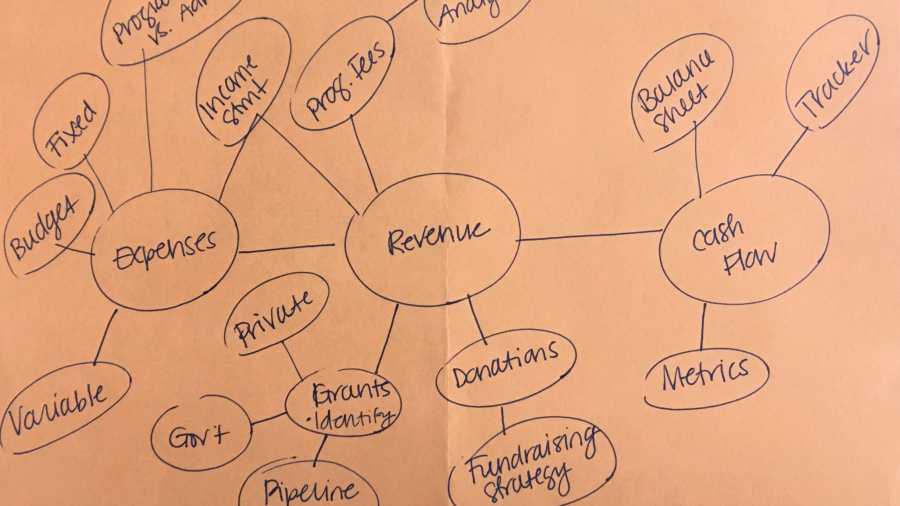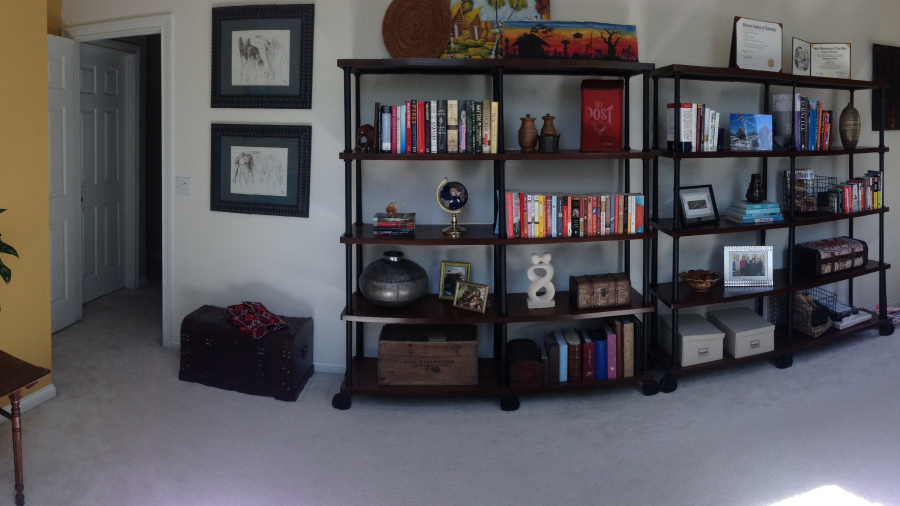Five years ago this month, my husband and I embarked on our honeymoon adventure across the globe to trek to Mount Everest Base Camp. We initially thought we’d go to Belize – I still have the Fodor’s Belize guide on my bookshelf – but once I realized I’d travel to Nepal shortly thereafter for work, it was a no-brainer. We could go to the beach anytime, but an adventure to the world’s tallest mountain? Once in a lifetime.
We flew to India less than twenty-four hours after our nuptials then caught the next flight to Kathmandu where we spent a few days exploring, before flying to the world’s most dangerous airport, Lukla. It’s not exactly how most newlyweds begin their life together (essentially camping for two weeks, sans showers) but it was the perfect leap into marriage for us.
I thought, as a tribute to this amazing trip, I would share a few tidbits from my journal as well as life lessons learned (which are also applicable to the nonprofit world!).
Day 1, Kathmandu to Lukla:
This morning we woke up, ready to brave the flight to Lukla and begin our trek. The domestic airport scene was chaotic but we managed to trail after our guide and make the flight. The plane was tiny – room for only fourteen people – but the airline actually had a flight attendant on board to pass out caramels and cotton balls, presumably to stuff in your ears if the pressure bothered you. The place was rickety and old, many seat belts didn’t work and it was HOT. The flight was relatively uneventful thankfully but landing in Lukla really is as scary as they say, especially when we noticed the thick cloud cover as we approached the airport. The runway is very short and ends in a large brick wall, so if the brakes fail, you’re toast!
Lesson learned: Trust that your leader (the pilot) will forge the right path for your organization.
Day 2, Lukla to Namche Bazaar:
We had to cross many suspension bridges along the path today and I was terrified. I’m not afraid of heights but there’s something about walking across a swinging, shaking football field-length metal structure, hanging hundreds of feet over boulders and rushing, freezing water that makes me nervous. My husband, of course, trotted across them taking pictures left and right while I tiptoed across, scared silly.
Lesson learned: We all approach problems differently but often with the same end result. Respect others’ approaches so together you can be successful.
Day 3, Namche Bazaar:
This morning we rose to the sounds of Lady Gaga at the Liquid Cocktail Bar downstairs around 5:30am. Breakfast was scrambled (powdered) eggs, fried potatoes and toast which my husband loved and talked about for days. After breakfast we hiked outside of town to a mountain village about 350 meters above Namche to check out the world’s highest airport. The word “airport” is a bit generous, as it was really just a massive field, and when we finally huffed and puffed our way to the top, the visibility was less than 50 feet. It was a big disappointment but did make for some interesting photos and decent acclimatization to the elevation.
Lesson learned: Sometimes the journey is more important than the destination. Put forth 100% effort into the trek and you may be surprised by the end result.
Day 6, Lobuche:
The first part of the trek was fairly level, but then we hit it: a very rocky ascent, no clear path, very steep and never-ending. And we were at well over 15,000 feet. It was by far the most grueling part of the entire trip. At the top of this killer mountain, we found dozens of graves and memorials of people who’d died on Everest – the scene of these memorials surrounded by the killer peaks was incredibly serene.
Lesson learned: Get some perspective. For us, this was a quick jaunt to Base Camp on vacation, while for others this was a site of death and memorial. Honor others’ experiences.
Day 7, Mount Everest Base Camp:
Lesson learned: Immerse yourself in victories, large and small. Put down the phone and take time to reflect on your triumph and lessons learned before your next adventure.























